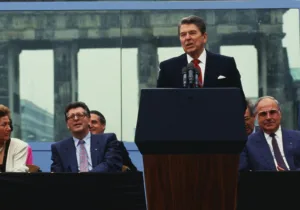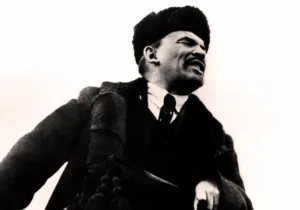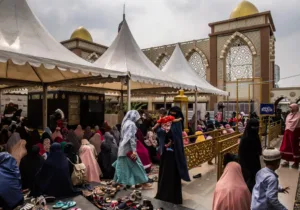This week marks the 50th anniversary of the Tet Offensive. Here is what you should know about the attacks that changed the course of the Vietnam War.
1. The Tet Offensive is the name for the series of coordinated attacks by the North Vietnamese and communist Viet Cong forces against South Vietnam in late January 1968. Although the offensive was a major military loss for the North Vietnamese, it was turned into a political victory because it weakened public support in the United States for the Vietnam War.
2. Tet Nguyen Dan, or Tet, is the biggest and most popular festival of the year in Vietnam. For the Vietnamese, Tet is a holiday to welcome the New Year and to express their respect and remembrance for their ancestors. The Tet holiday was traditionally a time of ceasefire that occurred between North and South Vietnam, but the truce was violated by North Vietnam with the launch of the Tet Offensive
3. In late 1967, the North Vietnam communist government and military became convinced that the South Vietnamese army was worn-down and the civilian population was weary of the U.S. military presence. They believed that after launching a coordinated surprise attack on more than 100 towns and cities, the South Vietnamese would rise up in support of the communists.
4. On the morning of January 30, 1968, North Vietnamese forces attacked across central and southern regions of South Vietnam. A total of approximately 70,000 to 84,000 Viet Cong and North Vietnamese troops participated in the attacks. The communists seized numerous towns and cities, but they soon realized the South Vietnamese were not going to welcome them as liberators.
5. As part of the initial offensive, a 19-man suicide squad attacked the U.S. embassy in Saigon. The squad never even entered the building before being captured or killed, but the U.S. media misreported the assault and claimed it as a success for the North Vietnamese. This proved to be a propaganda coup for the communists. As historian Keith W. Nolan says, the American public could not reconcile the good news campaign of their leaders with news images of U.S. soldiers “engaged in a full blown firefight with Viet Cong sappers at the United States Embassy Compound in downtown Saigon.”
6. Some of the most intense fighting occurred in Hue, which was the third largest city in South Vietnam. Parts of the city were taken by the Viet Cong, who quickly began a massacre of civilians, including women, children, and infants. The estimated death toll was between 2,800 and 6,000 civilians and prisoners of war. The Battle of Hue lasted three weeks before U.S. forces could regain control—making it the longest battle of the offensive
7. On February 7, 1968, the U.S. military used rockets and napalm to repel North Vietnamese forces in the South Vietnamese town of Ben Tre, killing hundreds of civilians. It was on that day that an unidentified American officer gave an Associated Press reporter one of the most famous quotes of the war: “It became necessary to destroy the town to save it.”
8. A second phase of simultaneous assaults on smaller cities and towns was launched on May 4 and lasted into June. A final third phase of the offensive began in August and lasted for six weeks. By the end of the year, U.S. and South Vietnamese forces had retaken the towns seized by North Vietnamese forces.
9. By the end of March, the communists had lost 32,000 soldiers and had 5,800 captured because of the attacks (their death toll would rise to about more than 58,000 by the end of phase three). The U.S. losses were 3,895 dead, and the South Vietnamese suffered 4,954 killed in action. An estimated 14,000 civilians also died during the offensive.
10. After their victory, U.S. military leaders were convinced that the war could be won. But the Johnson administration was looking to wind down the conflict. As the State Department’s Office of the Historian says, “the Tet Offensive weakened domestic support for the Johnson Administration as the vivid reporting on the Tet Offensive by the U.S. media made clear to the American public that an overall victory in Vietnam was not imminent.” While peace talks would drag on for five more years, many consider the post-Tet de-escalation to be the turning point that led to America’s loss in the war.
—
Joe Carter is an adjunct professor of journalism at Patrick Henry College, an editor for several organizations, and the author of the NIV Lifehacks Bible.
Photo Credit: South Vietnamese Rangers defend Saigon during the Tet Offensive. By U.S. military personnel, via Wikimedia Commons.






